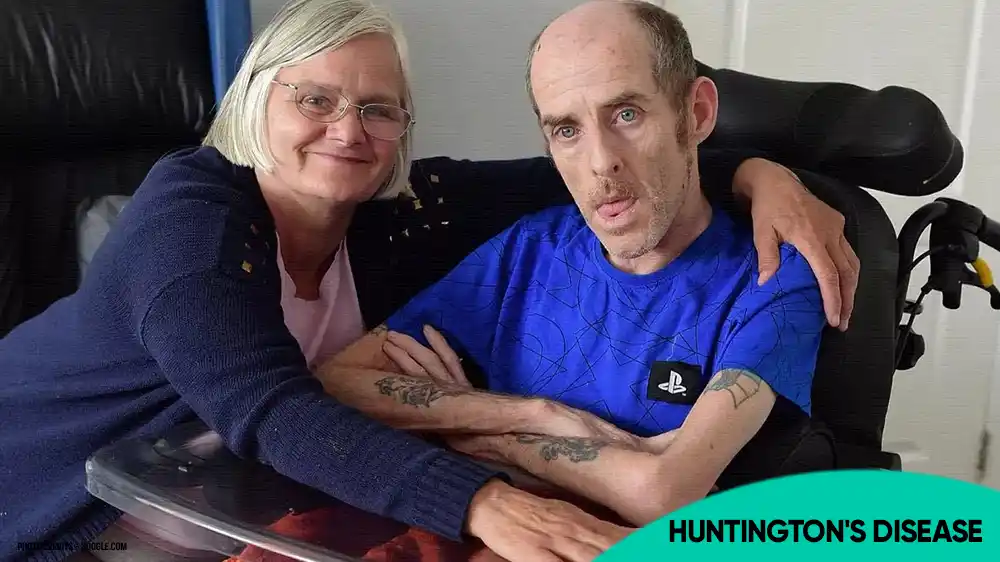
NEUROSCIENCE
Huntington's Disease: Understanding the Genetics of a Devastating Disorder
-
 Rahul Priydarss
Rahul Priydarss - May 9, 2024
Explore the comprehensive guide to Huntington’s Disease, covering its genetic origins, symptoms, diagnosis, treatment options, and ongoing research developments. Gain insights into the historical background, causes, and management strategies of this neurodegenerative disorder, with a focus on raising awareness and advocating for support services. Stay informed about the latest advancements in understanding and combating Huntington’s Disease.
Introduction of Huntington’s Disease:
Huntington’s disease is a progressive neurodegenerative disorder that affects the brain’s nerve cells, leading to significant physical, cognitive, and psychiatric impairments. First described by American physician George Huntington in 1872, this debilitating condition has since garnered considerable attention due to its complex genetic underpinnings and devastating impact on individuals and families.
What is Huntington’s Disease:
Huntington’s disease is a hereditary neurological disorder that affects the brain’s nerve cells over time. It’s caused by a mutation in the HTT gene, producing a faulty protein called huntingtin. This protein gradually damages certain areas of the brain, particularly those involved in movement control, cognition, and emotions.

Table of Contents
Historical background of Huntington’s disease:
Huntington’s disease (HD) has a relatively recent history in the grand scheme of medicine, with the first clear description coming in the mid-19th century. Here’s a timeline of some key milestones.
1872: American physician George Huntington publishes a detailed account of the disease in a paper titled “On Chorea”. This paper described the characteristic symptoms we now associate with HD, including movement disorders, personality changes, and cognitive decline, observed in multiple generations of a family in Long Island. Notably, Huntington even described the autosomal dominant inheritance pattern, predating the formalization of Mendelian genetics.
Late 19th – Early 20th Century: HD research remained limited due to the difficulty of treatment and the social stigma surrounding the disease. Many families kept the condition hidden.
Late 1960s: A confluence of factors reignited interest in HD. Advances in Parkinson’s treatment, the rise of patient advocacy groups, and the development of new tools in molecular genetics and neuroscience all played a role.
1993: A breakthrough occurs with the identification of the Huntington gene by a collaborative research group. This discovery paved the way for more accurate diagnosis and opened doors for future therapeutic development.
2024: Since it’s still early in the year (today is May 8th, 2024), there isn’t a comprehensive historical record of 2024 yet. However, depending on your area of interest, there might be some ongoing events or developments you could track.
Causes of Huntington’s Disease:
Huntington’s disease is caused by a genetic mutation in a gene called the HTT gene. This mutation affects the instructions for building a protein called huntingtin. It’s important to note that Huntington’s disease follows an autosomal dominant inheritance pattern. This means that a person only needs to inherit one copy of the mutated gene from a parent to develop the disease.
1. Genetic Mutation: Huntington’s disease is primarily caused by a mutation in the HTT gene. This gene provides instructions for making a protein called huntingtin. The mutation leads to the production of an abnormal form of the huntingtin protein.
2. Disruption of Cellular Processes: The mutant huntingtin protein disrupts various cellular processes in the brain. These disruptions include interference with protein clearance mechanisms, impairment of mitochondrial function, and dysregulation of gene expression.
3. Neurodegeneration: The disruption of cellular processes by the mutant huntingtin protein gradually damages nerve cells in specific regions of the brain, particularly the basal ganglia and cerebral cortex. This neurodegeneration contributes to the progressive loss of motor control, cognitive decline, and psychiatric symptoms characteristic of Huntington’s disease.
4. Inheritance Pattern: Huntington’s disease follows an autosomal dominant inheritance pattern. This means that a person only needs to inherit one copy of the mutated gene from either parent to develop the disorder. Each child of an affected parent has a 50% chance of inheriting the mutated gene.
5. Familial History: Due to its autosomal dominant inheritance pattern, Huntington’s disease tends to run in families. Individuals with a family history of the disease are at an increased risk of inheriting the mutated gene and developing the disorder.
6. Environmental Factors: While genetics play a primary role in the development of Huntington’s disease, environmental factors may also influence its onset and progression. However, the specific environmental triggers or modifiers are not yet fully understood.
Symptoms of Huntington’s Disease:
Huntington’s disease manifests with a spectrum of symptoms affecting movement, cognition, and behavior. These symptoms typically worsen over time as the disease progresses. Here’s an overview of the main symptoms associated with Huntington’s disease.
1. Motor Symptoms:
- Chorea: Involuntary, jerky movements that can affect various parts of the body, including the face, arms, and legs.
- Dystonia: Muscle contractions that cause twisting or repetitive movements, leading to abnormal postures.
- Bradykinesia: Slowness of voluntary movements, making tasks such as walking or reaching more difficult.
- Impaired Coordination: Difficulty with balance and coordination, resulting in unsteady gait and an increased risk of falls.
- Dysphagia: Difficulty swallowing, which can lead to choking or aspiration.
2. Cognitive Symptoms:
- Impaired Executive Function: Difficulty with planning, organizing, and executing tasks.
- Memory Impairment: Difficulty remembering recent events or learning new information.
- Attention and Concentration Issues: Trouble focusing on tasks and maintaining attention for prolonged periods.
- Decline in Problem-Solving Skills: Difficulty with decision-making and problem-solving.
- Impaired Learning: Reduced ability to acquire and retain new knowledge or skills.
3. Psychiatric and Behavioral Symptoms:
- Depression: Persistent feelings of sadness, hopelessness, or worthlessness.
- Anxiety: Excessive worry, restlessness, or nervousness.
- Irritability: Increased susceptibility to frustration, agitation, or anger.
- Impulsivity: Difficulty controlling impulses or acting without considering consequences.
- Psychosis: Hallucinations, delusions, or paranoia in some cases.
4. Emotional and Behavioral Changes:
- Apathy: Lack of motivation, interest, or enthusiasm for previously enjoyed activities.
- Social Withdrawal: Reduced desire to engage in social interactions or activities.
- Mood Swings: Rapid and unpredictable shifts in mood, ranging from euphoria to irritability.
- Aggression: Outbursts of verbal or physical aggression, often triggered by frustration or stress.
- Personality Changes: Alterations in personality traits, such as becoming more introverted, impulsive, or disinhibited.
5. Sleep Disturbances:
- Insomnia: Difficulty falling asleep or staying asleep throughout the night.
- Excessive Daytime Sleepiness: Feeling tired or drowsy during the day, regardless of nighttime sleep duration.
- Restless Legs Syndrome: Unpleasant sensations in the legs, often accompanied by an irresistible urge to move them.
Diagnosis of Huntington’s Disease:
Diagnosing Huntington’s disease involves a comprehensive evaluation that includes medical history, physical examination, neurological assessment, and genetic testing. Here’s an overview of the diagnostic process.
1. Clinical Evaluation:
- Medical History: The doctor will inquire about the patient’s symptoms, family history of neurological disorders, and any relevant medical history.
- Neurological Examination: The doctor will conduct a thorough neurological assessment to evaluate motor function, cognitive abilities, and psychiatric symptoms. This may involve assessing muscle tone, reflexes, coordination, and cognitive function.
2. Genetic Testing:
- DNA Analysis: The definitive diagnosis of Huntington’s disease is based on genetic testing to detect the presence of the abnormal HTT gene. A blood sample is typically collected, and DNA analysis is performed to identify the expansion of the CAG repeat within the HTT gene. Individuals with 40 or more CAG repeats are considered to have Huntington’s disease.
3. Imaging Studies:
- Brain Imaging: Magnetic resonance imaging (MRI) or computed tomography (CT) scans of the brain may be performed to assess for structural changes indicative of Huntington’s disease. These imaging studies can reveal atrophy (shrinkage) of specific brain regions, such as the basal ganglia and cerebral cortex.
4. Differential Diagnosis:
- Ruling Out Other Conditions: The clinical features of Huntington’s disease overlap with those of other neurological and psychiatric disorders. Therefore, it’s important to exclude other potential causes of similar symptoms, such as Parkinson’s disease, Wilson’s disease, or psychiatric conditions like bipolar disorder.
5. Genetic Counseling:
- Educating Patients and Families: Genetic counseling is an integral part of the diagnostic process for Huntington’s disease. Counselors provide information about the genetic basis of the disease, inheritance patterns, and the implications of genetic testing results. They also offer support and guidance for decision-making regarding family planning and genetic testing.
6. Confirmatory Testing:
- Confirmation of Diagnosis: Once genetic testing confirms the presence of the abnormal HTT gene expansion and clinical features are consistent with Huntington’s disease, a definitive diagnosis is established.

Treatment of Huntington’s Disease:
While there is currently no cure for Huntington’s disease, various treatment approaches aim to manage symptoms, improve quality of life, and provide supportive care. The treatment plan typically involves a multidisciplinary approach tailored to address the diverse manifestations of the disease. Here are the main components of treatment:
Medications:
Medication management for Huntington’s disease focuses on alleviating symptoms and improving quality of life. Here’s a list of medications commonly prescribed to address specific symptoms associated with Huntington’s disease.
1. Chorea (Involuntary Movements):
- Tetrabenazine: A dopamine-depleting agent that helps reduce chorea by inhibiting the release of dopamine in the brain.
- Deutetrabenazine: Similar to tetrabenazine, deutetrabenazine is approved for the treatment of chorea associated with Huntington’s disease. It also depletes dopamine to alleviate involuntary movements.
2. Dystonia (Muscle Rigidity and Spasms):
- Benzodiazepines: Medications such as clonazepam may be prescribed to help reduce muscle rigidity and spasms associated with dystonia.
3. Psychiatric Symptoms (Depression, Anxiety, Psychosis):
- Selective Serotonin Reuptake Inhibitors (SSRIs): Antidepressants like sertraline or citalopram may be used to manage symptoms of depression and anxiety.
- Atypical Antipsychotics: Drugs such as quetiapine or risperidone may be prescribed to address psychotic symptoms like hallucinations or delusions.
4. Cognitive Impairment:
- Cholinesterase Inhibitors: Medications like donepezil or rivastigmine may be prescribed to improve cognitive function and memory.
5. Sleep Disturbances:
- Sedative-Hypnotics: Medications such as zolpidem or trazodone may be used to address insomnia or sleep disturbances.
6. Mood Stabilizers:
- Lithium: In some cases, lithium may be prescribed to help stabilize mood and reduce impulsivity.
7. Gastrointestinal Symptoms:
- Prokinetic Agents: Medications like metoclopramide may be used to improve gastrointestinal motility and alleviate symptoms such as nausea or vomiting.
8. Nutritional Support:
- High-Calorie Supplements: Nutritional supplements may be recommended to prevent weight loss and malnutrition in individuals with Huntington’s disease.
Physical Therapy:
- Improving Mobility: Physical therapy aims to maintain or improve mobility, balance, and coordination. Exercises and techniques may be prescribed to address muscle rigidity, dystonia, and gait disturbances.
- Fall Prevention: Strategies to reduce the risk of falls, such as practicing balance exercises and using assistive devices like walkers or canes, may be recommended.
Speech and Swallowing Therapy:
- Dysphagia Management: Speech and swallowing therapy can help individuals with Huntington’s disease manage difficulties with swallowing (dysphagia) and speech articulation. Techniques may include swallowing exercises and modifications to diet and eating habits.
Occupational Therapy:
- Maintaining Independence: Occupational therapy focuses on maintaining independence in daily activities despite motor and cognitive challenges. Strategies may include adaptive equipment, home modifications, and cognitive training exercises.
Nutritional Support:
- Dietary Counseling: Due to the risk of weight loss and malnutrition in the advanced stages of Huntington’s disease, dietary counseling may be provided to ensure adequate nutrition. This may involve meal planning, calorie-dense foods, and nutritional supplements.
Psychiatric and Psychological Support:
- Managing Psychiatric Symptoms: Psychiatric symptoms such as depression, anxiety, irritability, and apathy are common in Huntington’s disease. Psychiatric medications and psychotherapy can help manage these symptoms and improve overall well-being.
- Counseling and Support Groups: Counseling and participation in support groups can provide emotional support, education, and coping strategies for individuals with Huntington’s disease and their families.
Research and Clinical Trials:
- Investigational Therapies: Ongoing research aims to develop new treatments that target the underlying mechanisms of Huntington’s disease. Participation in clinical trials may offer access to investigational therapies and contribute to advancing scientific knowledge about the disease.
Current Research and Developments Huntington’s Disease:
Huntington’s disease research is a rapidly evolving field with several promising areas of investigation. One key area focuses on targeting the huntingtin protein itself. Researchers are exploring gene silencing techniques, antisense oligonucleotides, and molecular glues to either prevent the production of the abnormal protein or alter its shape to prevent clumping.
Another approach is to reduce the amount of the mutant huntingtin protein. Therapies being explored include proteasome enhancers to boost the cell’s natural protein disposal system and molecular chaperones to help the mutant protein fold correctly. Protecting vulnerable neurons from damage is another avenue of research. Scientists are investigating antioxidants to combat oxidative stress and neuroprotective therapies to safeguard neurons.
Earlier detection and intervention are also crucial. Researchers are looking for biomarkers for earlier diagnosis and monitoring disease progression. Additionally, gene editing using CRISPR-Cas9 holds promise for potentially correcting the genetic mutation. Clinical trials are underway to evaluate the safety and efficacy of various drugs. While there is currently no cure for Huntington’s disease, these ongoing research efforts offer a hopeful outlook for the future.
Awareness of Huntington’s Disease:
Raising awareness about Huntington’s disease is crucial for promoting understanding, support, and resources for individuals and families affected by the condition. Here are key aspects of raising awareness.
1. Education and Information:
Public Awareness Campaigns: Initiatives such as educational seminars, workshops, and community events help disseminate information about Huntington’s disease, its symptoms, progression, and impact on individuals and families.
Online Resources: Websites, social media platforms, and online forums provide accessible information and support for individuals seeking information about Huntington’s disease.
2. Advocacy and Support:
Patient Advocacy Groups: Organizations dedicated to Huntington’s disease advocacy work to raise awareness, advocate for research funding, and provide support services for affected individuals and families.
Support Networks: Support groups and online communities offer emotional support, shared experiences, and practical advice for individuals living with Huntington’s disease and their caregivers.
3. Healthcare Professional Education:
Training Programs: Continuing medical education programs and workshops for healthcare professionals increase awareness and knowledge about Huntington’s disease diagnosis, management, and support services.
Clinical Guidelines: Developing and disseminating clinical guidelines for the diagnosis and management of Huntington’s disease helps standardize care and improve patient outcomes.
4. Genetic Counseling and Testing:
Access to Genetic Counseling: Providing access to genetic counseling services helps individuals and families understand the hereditary nature of Huntington’s disease, explore reproductive options, and make informed decisions about genetic testing.
Advocating for Genetic Privacy: Advocacy efforts focus on protecting the privacy and confidentiality of genetic testing results to prevent discrimination and stigma.
5. Media and Entertainment:
Representation in Media: Increasing representation of Huntington’s disease in books, films, and television shows helps raise awareness and reduce stigma surrounding the condition.
Celebrity Advocacy: Celebrity advocates who openly discuss their experiences with Huntington’s disease help raise awareness and inspire public support for research and patient care initiatives.
FAQs about Huntington’s Disease:
A1: The average life expectancy after diagnosis is typically 10 to 20 years, although this can vary depending on the individual’s age at onset and the progression of symptoms.
A2: While Huntington’s disease does not skip generations, individuals who inherit the mutated gene may not develop symptoms until later in life, leading to the apparent skipping of the disease within a family lineage.
A3: Currently, there is no cure for Huntington’s disease. However, ongoing research efforts are focused on developing disease-modifying therapies and potential cures.
A4: Huntington’s disease can significantly impair motor function, cognition, and emotional well-being, making daily tasks such as eating, dressing, and communicating challenging.
A5: As Huntington’s disease is caused by a genetic mutation, there are currently no preventive measures to avoid inheriting the condition. However, genetic counseling and testing can provide valuable information for individuals and families considering family planning options.
-Please remember, to always consult with healthcare professionals or Doctors for personalized advice related to medical conditions.
Conclusion:
While there’s still no cure, ongoing efforts in research and awareness are paving the way for better understanding and management of Huntington’s Disease. From its historical origins to modern advancements, collaboration among healthcare professionals, researchers, and advocacy groups offers hope for improved quality of life. While there is no cure yet, ongoing efforts in medication management, therapy, and innovative research offer hope for improved quality of life and potential breakthroughs in the future.




